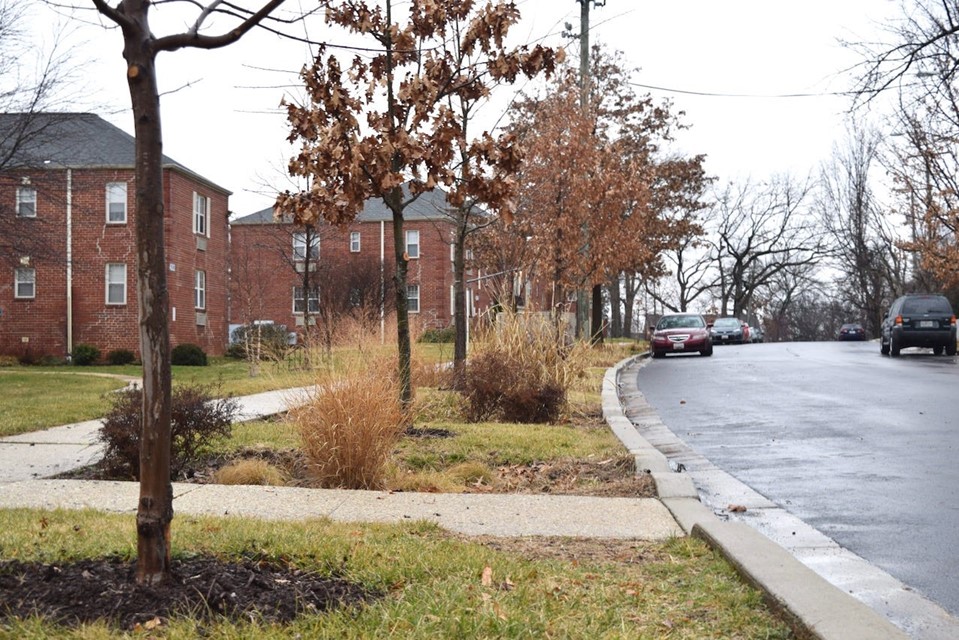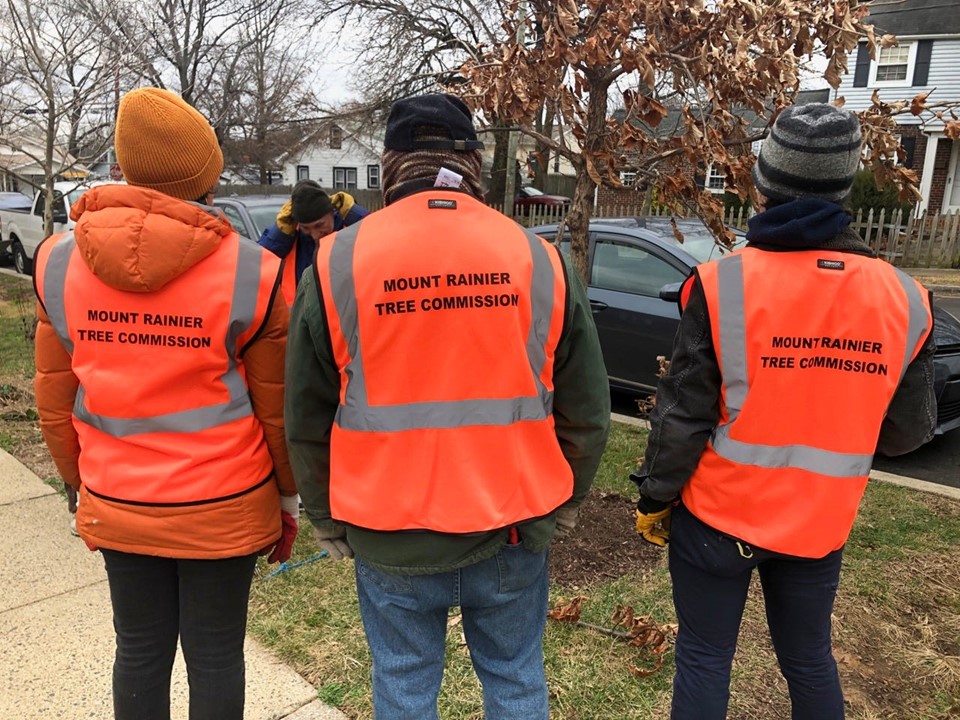by Gabriel Popkin
Earlier this week I left my house, walked down the street and started snipping branches off of trees growing between the sidewalk and the roadway. When I encountered a limb too stout for my loppers, I grabbed a hand saw. Within a couple of hours, there were piles of branches up and down the block. On its surface, the activity feels mundane. What could be more prosaic than pruning a few trees? But lately, I’ve begun to ask the opposite question: What could be more profound?

There’s a temptation to think that all we need to do for trees is stick them in the ground. But that couldn’t be farther from the case: To live full lives, especially in cities where we ask them to grow in conditions far removed from the forests where they’ve evolved, trees need our continued attention and care. And of all the things we can do for trees, I’ve come to believe that pruning is one of the most durable actions we can take — and one of the most powerful ways we can speak to the future. So I’m here to convince you that tree planting as a solitary act has been oversold and overhyped. Pruning, my friends, is where it’s at. To be clear, tree planting is wonderful and important work. I’ve been involved in the planting of hundreds of trees, mostly in the town where I live outside Washington, DC. I’m sure I will plant many more trees. But tree planting is also overrated, because it’s so often framed as a one-time, commitment-free action that singlehandedly addresses a problem. It’s not. If a tree is planted but not cared for, especially in a city, it will probably grow poorly, live a truncated life and fail to provide much benefit for anyone. In fact, it may do more harm than good, saddling cities with maintenance costs they can’t afford and potentially turning residents off of trees for decades to come. Don’t just plant. Prune! So instead of planting trees this winter, I’m pruning them. And, perhaps not surprisingly, I feel especially drawn toward the trees near my house. I, along with other volunteers on my neighborhood’s tree commission, planted many of these trees in 2018. For one especially tree-deprived block, we chose a mix of more than a dozen species: basswood, baldcypress, tulip poplar, red maple, red oak, swamp white oak, redbud, hackberry, sycamore, willow oak, bur oak, river birch, fringe tree.

Five years in, our trees are starting to look like real trees, though still somewhat awkward and gangly. In human terms, they’re a bit like middle-schoolers: growing into their mature selves, but not yet ready for full independence. We still have work to do. I’ve learned over the years that planting a tree is easy, and growing a tree to its full potential is much harder. And because it’s hard, it’s also way more exciting. That’s because every tree offers an intellectual puzzle combined with a physical challenge. My job is to figure out what the tree needs and then carry it out. One might need lower limbs removed, so it can direct its resources toward growing upward. Another might need help “deciding” which of two competing upward-pointing branches should be the “leader” — in other words, one branch should be snipped off or shortened so the other can take the lead. A third tree might need some interior branches snipped off so they don’t create a weak structure or rub against each other, which can open wounds where disease can get in. A fourth may need all of the above. I realize this may all seem like helicopter tree parenting. Trees grow in the forest just fine without human help, we’re often told. Can’t they grow just as well in cities? It’s important to remember that the trees we’re growing in cities are wild species. With few exceptions, they were not designed or bred to grow in urban environments. (And most of those exceptions, such as the Bradford pear, have fallen out of favor.) We’ve plucked our urban trees from the forest and asked them to do things they did not evolve to do: live for decades in tiny spaces surrounded by pavement and provide us city dwellers with shade, beauty, cooling, health benefits, happiness. It’s amazing that wild forest trees grow at all in the puny boxes of compacted soil we offer them, much less that many seem to thrive there. It’s easy to imagine a world in which trees thrust into such environments simply shriveled and died. In the forest, a tree’s life is shaped by its neighbors, who force it to grow skyward with one main stem reaching for the light. Trees in forests self-prune as they grow, shedding lower branches when they no longer capture enough sunlight to be worth the metabolic cost of maintenance. Trees in cities, freed from competition, often “forget” to self prune or form a leader. Instead, they grow branches outward, often horizontally. They’re seeking light, and when you have no one above you, going out gets you more than going up. But that’s not what we want. We want our trees to become strong, stately, shade-casting giants that will endure for decades — and to avoid conflicts with pedestrians and delivery trucks that tend to end poorly for trees. So we need to assume the role of arboreal forest neighbors and shape our trees. It’s a daunting task. Some of the trees I’m pruning are already several times my height, and they’re just getting started. Some could — should — outlive me. With luck, they will improve the lives of people who aren’t even born yet — people I will never know. As the world warms, they will become ever more important. To have so much at stake is almost overwhelming. To think I can meaningfully shape the lives of such massive, long-lived beings can feel like the height of hubris. But then I remind myself, if I don’t do it, who will? Our small city has almost no money to pay someone to care for trees, and my fellow volunteer pruners are busy in other parts of the city. So I put my doubts aside, pick up my tools and get to work. Speaking to the future I fear that only a small fraction of the millions, billions or trillion trees planted will get this kind of care. I’ve seen countless grants for tree planting. I can’t recall ever seeing a grant for tree pruning or long-term care, even though pruning can account for 40 percent of a city’s tree-related expenditures — up to eight times the cost of tree planting. (That’s mostly pruning of big trees with machines, not the early structural pruning I do from the ground, but structural pruning can reduce future maintenance costs.)

Thanks in large part to my neighbor and tree pruning mentor Barry Stahl, I think we in Mount Rainier, almost by accident, have stumbled upon a model of community-led tree care that works, if perhaps not perfectly, as well as any city program I’m aware of. It requires a special combination of factors: a skilled leader (Barry), a critical mass of motivated volunteers and a city government willing to trust its residents (possibly a reflection of limited resources). Tree commissioners and several others are authorized to prune public trees, including street trees. Hundreds of people walk by our trees every day. Sometimes dogs poop on them and occasionally one is vandalized, which can be distressing. Few people probably give them — or their caretakers — much thought as they hurry about their lives. But we do. Barry put this beautifully and profoundly the other day, when he said, “We have a duty to these trees and to the community. But we also have a privilege. Nobody else gets to look at them and know them the way we do.” These trees are real, physical beings. I can run my hands over their bark, smell their flowers, brush their leaves against my cheek. When I prune them, they respond; if I’m attuned to these responses, I can care for them better. It’s a positive feedback loop. I believe we are meant to interact, physically and meaningfully, with the world. We are not just brains in jars, as much as the online life can give that impression; we are bodies with senses, muscles, nerve endings. For many of us, our bodies are so underutilized that we need to invent reasons to exercise them. Pruning trees is meaningful bodily work. It awakens ancestral connections between human bodies, tools and wood: three things that have been in contact and communication for as long as our species has existed. Soon, perhaps as soon as next year, some of the trees I’ve been pruning will grow beyond my reach. Like a parent sending their child off to college, I will have to let them go, trusting them to take care of themselves. I already feel wistful.
Gabriel Popkin, a Lexington native, is a free-lance journalist writing about science, nature and the environment. His work has appeared in the New York Times, the Washington Post, Science, Nature and other national publications. He lives in Mt. Rainier, Maryland, just across the street from the Washington DC border. A longer version of this article appeared at his Substack
